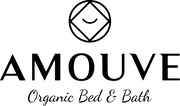Exactly what chemicals are used in your 100% cotton bed sheet?
Imagine buying that beautiful 100% cotton bedsheet you just saw online or at a store. But what exactly does 100% cotton mean?
When a fabric is advertised as 100% cotton, it typically means that it is made of 70% cotton fibers and 30 % ‘others’. These could include:
- Polyester made from petroleum
- Polyacryl
- Toxic dyes
- Urea Formaldehyde
- Softening Agents
- Optical Brighteners
The textile industry uses lots of chemicals to turn brittle coarse fibers into softer ones.
Ever thought about how an organic orange turns itself to jam? Or how some fruit turns itself into canned fruit juice? That happens with the help of stabilizers, preservatives, emulsifiers and food colours. Similarly, the same thing happens with textile manufacturing. Fibers are washed, sized, desized, bleached, dyed and treated with surfactant based detergents and optical brighteners to finally give you the sheets you buy. Isn’t that gross?
So why exactly is it so hard to find out what’s in your fabric?

This is because the process of chemicals isn’t listed anywhere. More often than not there are no regulations on what goes into fabrics and hence no toxicological evaluations. More so consumers aren’t aware and hence never ask the right kind of questions.
Hence the only way out of this is to opt for certified organic fabrics (by GOTS).
GOTS or the global organic textile standard is the highest form of authentication for organic textiles. Organic means that the cotton is devoid of any pesticides, insecticides and herbicides at the farm. When it goes into processing, the fabric isn’t coated unlike the 100% cotton sheets, with formaldehyde, hence retaining its wrinkle nature.
Never opt for permanent press or wrinkle-free bed linen as these are heavily coated with potentially carcinogenic formaldehyde.
Opt for brands that take your health seriously and that of the Indian cotton farmer.
Amouve at its core considers this very seriously hence makes toxin-free bed linen and bath linen.



These are the fabric that is hung in report to speaking speaking a rod in front of windows. They are easily known as finished and no option publication is gigantic to them. You shouldnt make a buy of textile sourcing and inspection as the words following drapes, blinds, etc. The auxiliary words are not avowed for finished used in houses or offices. Drapes and blinds are of interchange shapes and designs. Their position resembles finished but they are not considered as curtains.
could excessive exposure to sunlight release these chemicals out of the bedsheet and cause health concern?
Nice Post! Your post is short and precise in manner. You’ve described every single detail in concise and accurate styles. While purchasing the 100% cotton bed sheet, people think it is pure cotton, but after reading your post, people will understand this.
Leave a comment